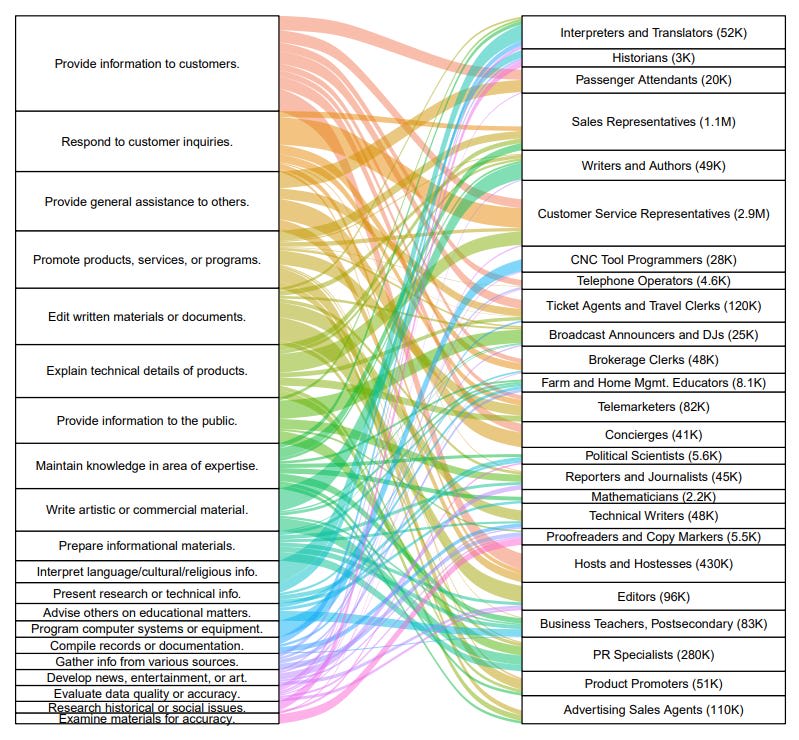Published on August 9, 2025 4:20 PM GMT
I recently read “Working with AI: Measuring the Occupational Implications of Generative AI”, a paper by Microsoft Research which offers a data-driven look at generative AI's real-world impact on the workforce by analyzing 200,000 user conversations with Bing Copilot. The research was done between January and September 2024. This is a good paper to read if you are interested in how generative AI is replacing, supplementing, and enhancing work related tasks. Below are my conclusions on the paper.
My primary conclusion is that AI still predominantly functions as a service-oriented assistant. There is a clear divergence between a user's goal (the knowledge work they are trying to do) and the AI's action (the service it performs to help). For example, a user researches a complex topic while the AI acts as an information provider, summarizing sources and explaining concepts. It is not replacing the knowledge worker, but augmenting them by handling a specific sub-task. The study notes that for some tasks, user satisfaction is higher when the AI assists the user than when it attempts to perform the task directly.
This assistive capability means roles centered on providing information or support, like customer service representatives and translators, already show high AI applicability. Many of the work activities in these roles show a strong overlap with demonstrated AI capabilities, though the study finds this does not extend to performing these jobs in their entirety.
In contrast, roles requiring more "agentic" capabilities, such as executing financial transactions, are not being performed by the AI; it only assists the human who performs the action.
Finally, this model of assistance extends even to occupations with significant physical components. The study shows that LLMs are handling the knowledge-based aspects of manual labor. For example, it is helping chefs and cooks draft recipes and nutritional requirements, even if it cannot chop the vegetables. This shows a broad, if narrow, potential for current generative AI to be integrated across nearly every field, primarily as a collaborative tool rather than an autonomous worker.
Discuss


